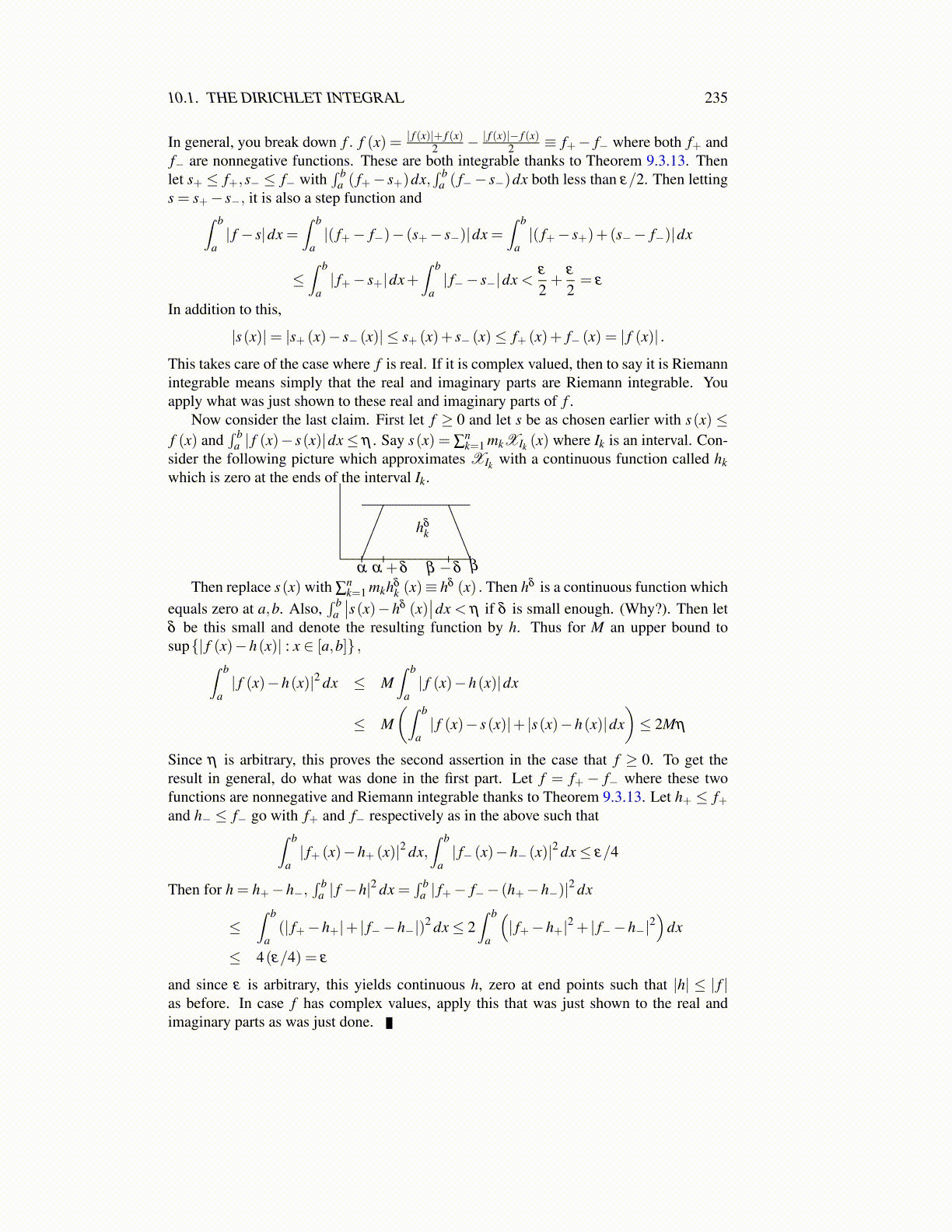
10.2. CONVERGENCE 235
as r→∞. Therefore, for r large enough, 10.5 implies∣∣∫ ∞
−∞f (t)sin(rt)dt
∣∣< 3ε . Since ε isarbitrary, this shows that 3. holds.
Another proof is in Problem 12 on Page 247.A simple repeat of the above argument shows the following slightly more general ver-
sion of the Riemann Lebesgue lemma.
Corollary 10.2.2 If f ∈ L1 (R) , then limr→∞
∫∞
−∞sin(ru+ c) f (u)du = 0. Also,
limr→∞
∫∞
−∞
cos(ru+ c) f (u)du = 0.
Proof: If you do the first part, which is in the exercises, the second claim comesright away from the observation that sin(x+π/2) = cos(x) . Therefore, it follows thatcos(ru+ c) = sin(ru+ c+π/2) .
The case of most interest here is that of piecewise continuous functions.
Definition 10.2.3 The following notation will be used assuming the limits exist.
limu→0+
g(x+u)≡ g(x+) , limu→0+
g(x−u)≡ g(x−)
The convergence of Fourier series is discussed a little later. It will be based on thefollowing theorem and a corollary which follow from the above Riemann Lebesgue lemma.Here is a graph of sin(nx)/x for a few values of n. Note that limx→0+
sin(nx)x = n and that
the graph shrinks and wriggles very fast as x increases for n large. This suggests that if fis smooth enough, then limn→∞
∫∞
0 f (x) sin(nx)x dx might be expected to depend on f (0+).
At least it is not unreasonable that this should happen. The wriggles will tend to cancelthings out while the limit suggests that the value at 0 will be emphasized. This is part ofthe following major theorem.
0 1 2 3
0
5
10
15
Lemma 10.2.4 Let f ∈ L1 ((0,∞)) and suppose | f (0)− f (u)|<Kuγ for some γ ∈ (0,1]whenever 0 < u≤ δ . Then
limr→∞
2π
∫∞
0
sin(ru)u
f (u)du = f (0)
Proof: From the theorem about the Dirichlet integral, Theorem 10.2.1,
2π
∫∞
0
sin(ru)u
f (u)du− f (0) =2π
∫δ
0
sin(ru)u
( f (u)− f (0))du (10.6)